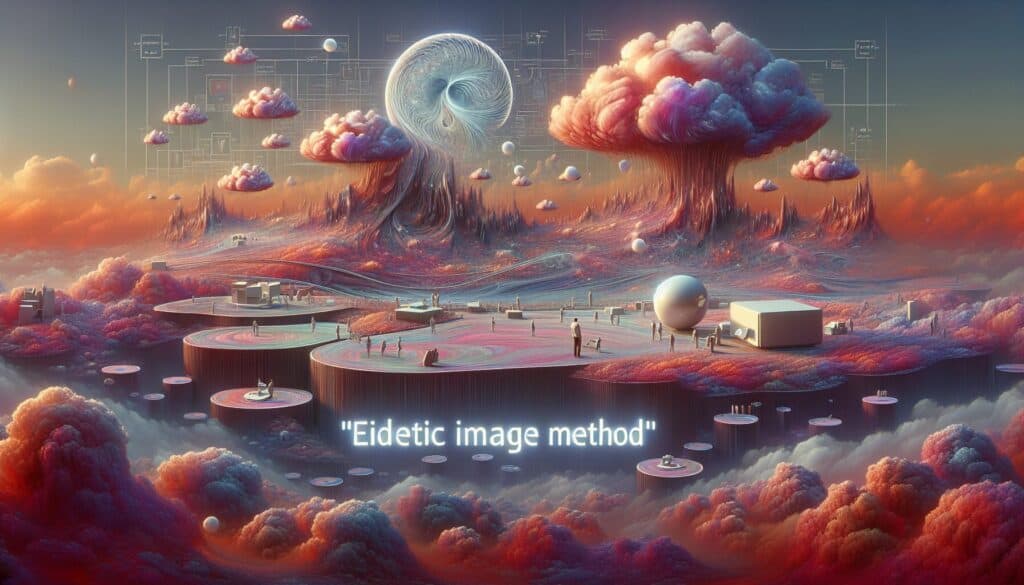A technique used in user research and design to elicit detailed, almost photographic, recall of experiences or interactions with a product or system.
- المنهجيات: العملاء والتسويق, الأفكار, تصميم المنتج
طريقة الصورة البصرية

طريقة الصورة البصرية
- تجربة العملاء, تخطيط رحلة العميل, التفكير التصميمي, التصميم التفاعلي, سهولة الاستخدام, اختبار قابلية الاستخدام, تجربة المستخدم (UX), تصميم يركز على المستخدم
الهدف:
كيفية استخدامه:
- Users are guided to vividly recall a specific past experience with a product, focusing on sensory details, actions, and emotions. The interviewer probes for rich details as if the user is reliving the event.
الايجابيات
- Can uncover deep insights and emotional responses that might be missed by other methods; helps understand the nuances of user experience; provides rich qualitative data.
سلبيات
- Relies heavily on participant's memory and ability to articulate eidetic-like recall; can be time-consuming per participant; requires skilled interviewing techniques to guide recall without leading the participant.
الفئات:
- العملاء والتسويق, تصميم المنتج
الأفضل لـ
- Eliciting rich, detailed recall of user experiences to uncover deep insights and emotional responses.
The Eidetic Image Method finds application in various sectors such as consumer electronics, automotive design, and healthcare product development, where understanding the emotional connection users feel towards a product can significantly inform design decisions. This methodology is particularly valuable during the early phases of product development, especially in user research and ideation stages, where capturing nuanced user experiences can lead to innovative solutions tailored to real needs. Facilitated workshops or interviews involving stakeholders, including designers, product managers, and end-users, can help create a comprehensive snapshot of user engagement with products. Participants are encouraged to share stories in a controlled setting designed to encourage vivid recall, often guided by seasoned moderators trained in qualitative research techniques. The richness of the data collected through this method provides designers and engineers with a deeper comprehension of user expectations, motivations, and emotional reactions, allowing them to iterate on designs that resonate more profoundly with users. This approach also complements quantitative methods by filling the gaps that numbers may miss, revealing not only what users did but why they felt the way they did during their interactions.
الخطوات الرئيسية لهذه المنهجية
- Guide users to select a specific product experience.
- Encourage users to focus on sensory details during the recollection.
- Prompt users to describe their actions taken with the product.
- Inquire about emotional responses throughout the experience.
- Explore contextual factors surrounding the experience.
- Probe for nuanced details that surface during recall.
- Facilitate a deeper reliving of the experience with open-ended questions.
نصائح للمحترفين
- Encourage participants to express sensory details vividly, prompting questions that highlight sight, sound, smell, and touch for deeper engagement.
- Utilize a timeline approach during interviews, asking users to recount steps in their experience sequentially, enhancing memory recall through temporal cues.
- Facilitate emotional reflection by asking participants how they felt during specific moments to uncover underlying motivations and sentiments associated with their experiences.
لقراءة عدة منهجيات ومقارنتها, نوصي باستخدام
> مستودع المنهجيات الشامل <
مع أكثر من 400 منهجية أخرى.
نرحب بتعليقاتكم على هذه المنهجية أو المعلومات الإضافية على قسم التعليقات أدناه ↓، وكذلك أي أفكار أو روابط متعلقة بالهندسة.
السياق التاريخي
1986
(إذا كان التاريخ غير معروف أو غير ذي صلة، على سبيل المثال "ميكانيكا الموائع"، يتم تقديم تقدير تقريبي لظهوره الملحوظ)

منشورات ذات صلة
استبيانات الانزعاج العضلي الهيكلي
الاختبار متعدد المتغيرات (MVT)
تحليل الانحدار المتعدد
أنظمة التقاط الحركة
طريقة MoSCoW
اختبار متوسط المزاج